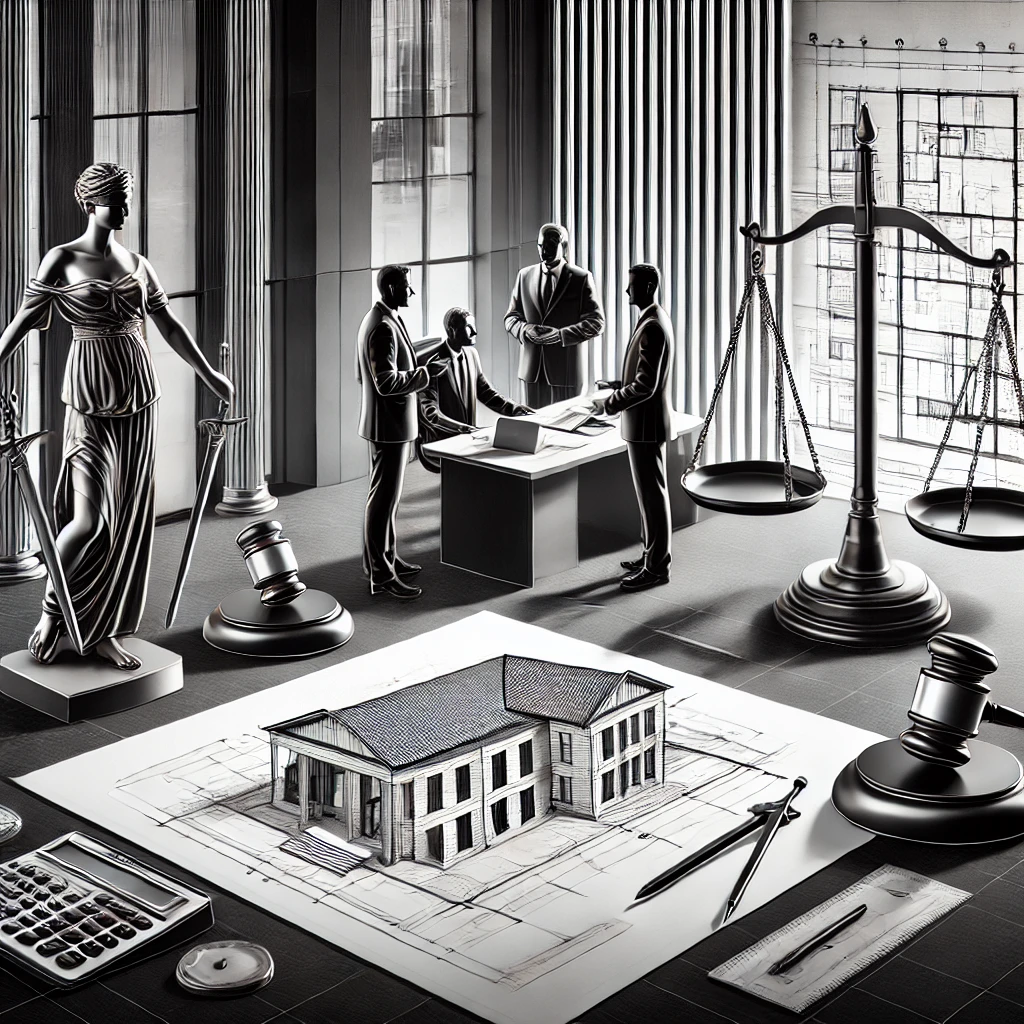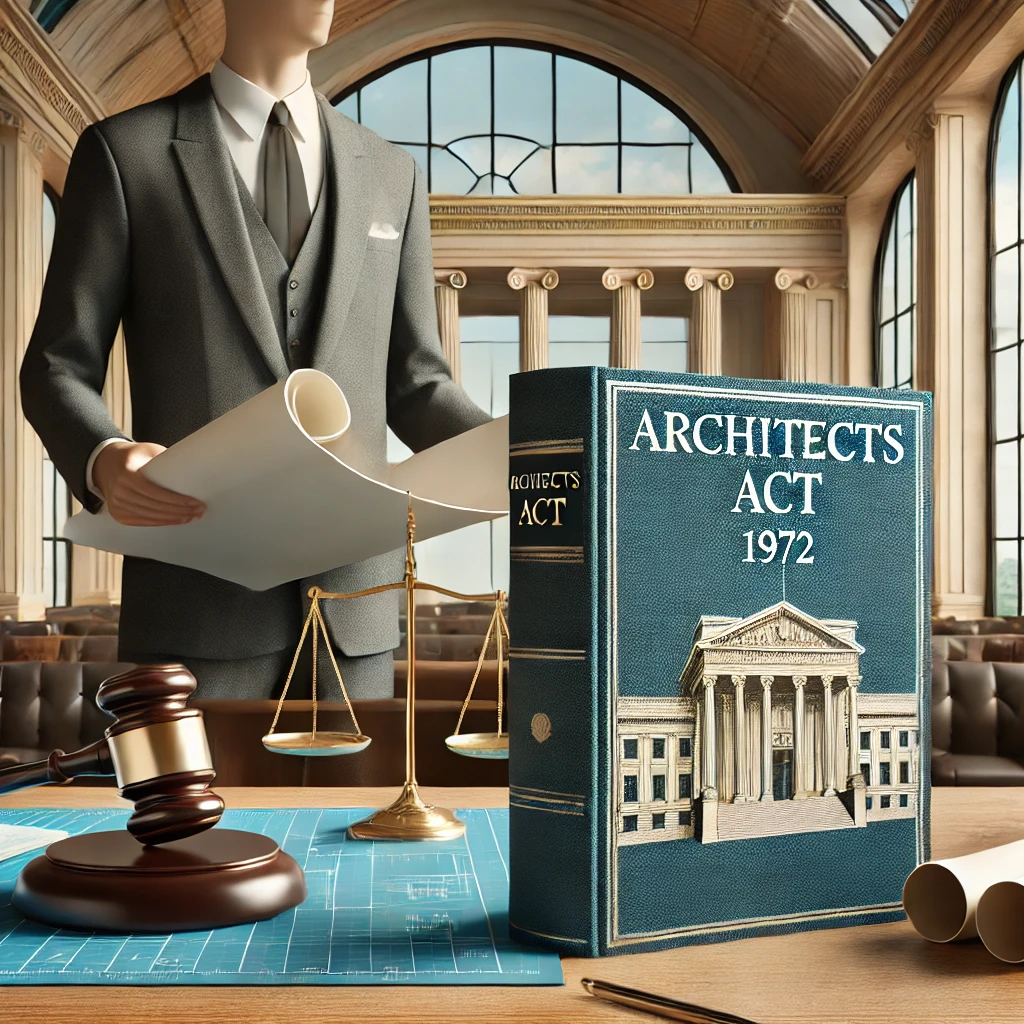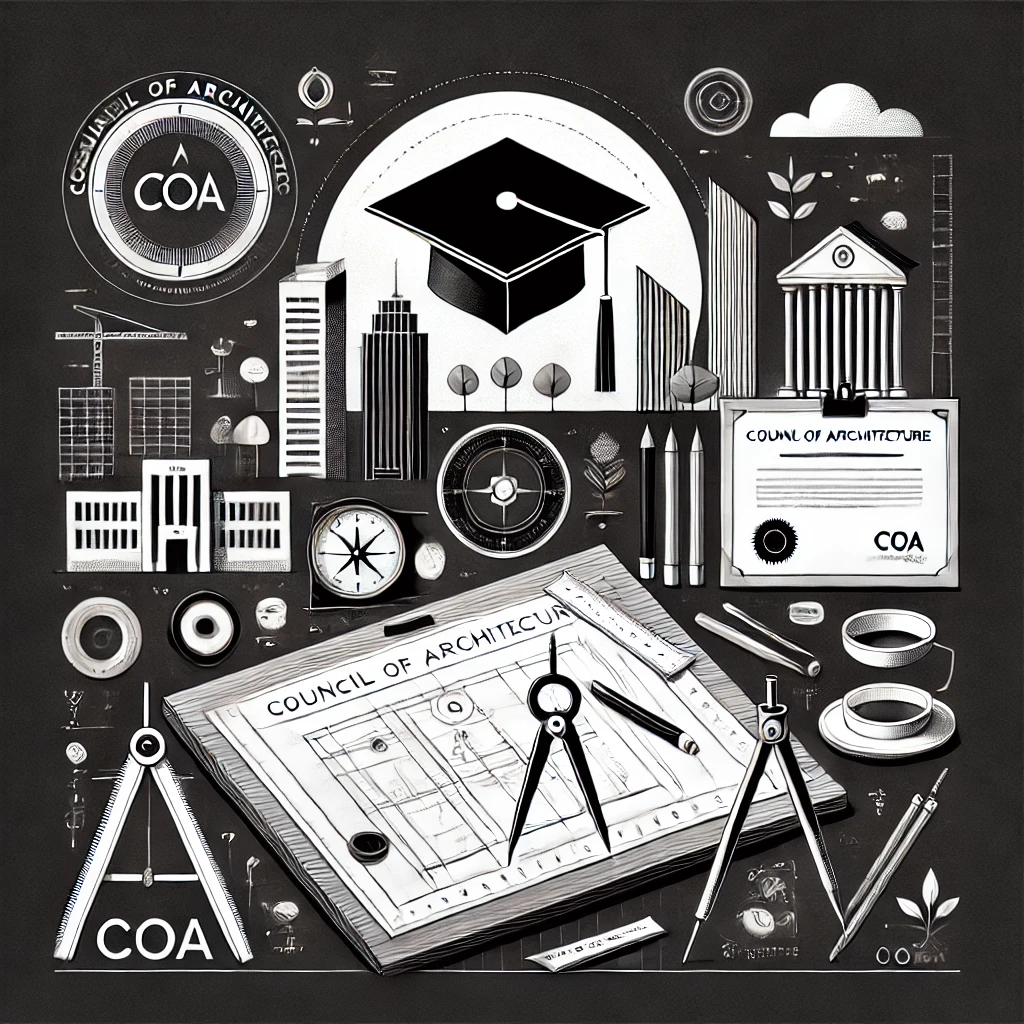Dispute Resolution & Arbitration in Architecture: Role of COA in Professional Practice
A. Pedian
- February 14, 2025
- 16 Min Read

Introduction
Disputes are an inevitable part of architectural practice, arising from differences in contracts, project execution, design interpretations, and financial matters. In the construction industry, disagreements between clients, architects, contractors, and other stakeholders can lead to delays, financial losses, and legal complications. Therefore, an efficient dispute resolution mechanism is essential to ensure smooth project execution and maintain professional integrity.
Table of Contents
Overview of Dispute Resolution in Architecture
Dispute resolution in architecture refers to the formal and informal methods used to resolve conflicts that arise during the design, planning, and construction phases of a project. Common dispute resolution methods include:
- 🔶 Negotiation – A direct discussion between the parties to settle disputes amicably.
- 🔶 Mediation – A neutral third party facilitates discussions to reach a mutual agreement.
- 🔶 Conciliation – Similar to mediation but with a more active role by the conciliator in suggesting solutions.
- 🔶 Arbitration – A legally binding resolution process where a neutral arbitrator reviews evidence and makes a decision.
- 🔶 Litigation – Taking the dispute to court, which is often time-consuming and costly.
Among these methods, arbitration is widely preferred in the architecture, engineering, and construction (AEC) industry due to its speed, cost-effectiveness, and industry expertise in resolving disputes.
Importance of Arbitration in Professional Practice
Arbitration plays a crucial role in ensuring fair and efficient dispute resolution without the need for prolonged court battles. Its significance in architectural practice includes:
- 🔶 Industry-Specific Expertise – Unlike general court proceedings, arbitration panels consist of experts in architecture, construction, and contract law, leading to well-informed decisions.
- 🔶 Time & Cost Efficiency – Arbitration is faster and less expensive than litigation, making it a practical choice for resolving disputes without significant project delays.
- 🔶 Confidentiality – Unlike court cases, arbitration proceedings are private and confidential, protecting sensitive business relationships and proprietary designs.
- 🔶 Binding & Enforceable Decisions – Arbitral awards are legally binding and enforceable under the Arbitration and Conciliation Act, 1996, ensuring compliance from all parties.
In the architectural profession, arbitration helps maintain professional ethics, project efficiency, and financial security while fostering trust among architects, clients, and contractors.
Role of COA in Settling Architectural Disputes
The Council of Architecture (COA) plays a key role in regulating and facilitating arbitration in the field of architecture. As per the Architects Act, 1972, COA has the authority to:
- 🔹 Provide arbitration services for disputes between architects, clients, and construction firms.
🔹 Lay down rules and guidelines for arbitration procedures within the architectural profession.
🔹 Maintain a panel of expert arbitrators specializing in architectural disputes.
🔹 Ensure fair and ethical dispute resolution while upholding professional standards.
COA’s arbitration framework ensures that disputes are resolved efficiently and fairly, minimizing disruptions to architectural projects while maintaining the professional integrity of architects
Understanding Disputes in Architecture
Disputes in architecture arise when there is a disagreement between architects, clients, contractors, or other stakeholders regarding contractual obligations, design expectations, financial matters, or legal responsibilities. Since architecture projects involve multiple parties, complex contracts, and regulatory requirements, conflicts are common, and their resolution is essential to avoid project delays, financial losses, and reputational damage.
Types of Disputes in Architecture
Architectural disputes generally fall into the following categories:
- 🔶 Contractual Disputes – Disagreements over contract interpretation, scope of work, timelines, and payment terms.
- 🔶 Design-Related Disputes – Conflicts arising from perceived errors, omissions, or deviations in architectural plans and drawings.
- 🔶 Financial Disputes – Issues related to fee disputes, non-payment, cost overruns, or additional charges for extra services.
- 🔶 Legal Disputes – Violation of building codes, zoning laws, or professional misconduct, leading to regulatory or legal action.
Impact of Unresolved Disputes on Architects and Clients
When disputes remain unresolved, they can have serious consequences for all parties involved:
- ♦️ For Architects: Damage to professional reputation, financial losses, and potential legal action.
- ♦️ For Clients: Project delays, increased costs, and potential legal liability.
- ♦️ For Projects: Stalled or abandoned construction, strained relationships, and legal complications.
By addressing disputes promptly and professionally through arbitration and mediation, architects and clients can mitigate risks and maintain project efficiency.
Legal Framework for Dispute Resolution in Architecture
The resolution of architectural disputes in India is governed by various legal frameworks and regulations that ensure fair settlements and protect professional rights.
Arbitration and Conciliation Act, 1996
The Arbitration and Conciliation Act, 1996 is India’s primary law for alternative dispute resolution (ADR) and provides architects with a faster and cost-effective way to settle disputes.
Key Features of the Act:
- ✅ Encourages out-of-court dispute resolution to reduce legal costs and time.
- ✅ Arbitration awards are legally binding and enforceable in courts.
- ✅ Provides flexibility in selecting arbitrators with expertise in architecture and construction.
- ✅ Ensures confidentiality in arbitration proceedings.
Role of the Architects Act, 1972 in Dispute Settlement
The Architects Act, 1972 provides the Council of Architecture (COA) the authority to:
- ☑️ Establish professional conduct guidelines for architects.
- ☑️ Investigate complaints and disputes related to professional misconduct.
- ☑️ Facilitate arbitration and mediation services for resolving disputes.
- ☑️ Take disciplinary action against architects violating professional ethics.
By integrating legal provisions with COA’s arbitration services, architectural disputes can be resolved efficiently while upholding professional integrity.
Arbitration in Architectural Disputes
Definition and Importance of Arbitration in Architecture
Arbitration is a structured dispute resolution process where a neutral third party, known as an arbitrator, reviews the claims and evidence presented by both parties and delivers a legally binding decision. In the field of architecture and construction, disputes often arise due to contractual disagreements, design changes, delays, or payment conflicts, making arbitration an effective alternative to litigation.
The importance of arbitration in architectural disputes lies in:
- ✅ Industry-Specific Expertise – Arbitrators with technical knowledge of architecture and construction ensure well-informed decisions.
- ✅ Cost-Effectiveness – Arbitration is generally less expensive than court proceedings, saving both time and legal fees.
- ✅ Confidentiality – Unlike public court cases, arbitration remains private, protecting business relationships.
- ✅ Enforceable Decisions – Arbitral awards are legally binding under the Arbitration and Conciliation Act, 1996.
Given the complexity of construction contracts and architectural agreements, arbitration provides a structured and fair mechanism for resolving conflicts while allowing projects to proceed without prolonged delays.
Difference Between Arbitration and Litigation
| Feature | Arbitration | Litigation |
|---|---|---|
| Speed | Faster process with defined timelines | Lengthy court procedures |
| Cost | Lower legal expenses | High court and lawyer fees |
| Expertise | Industry-specific arbitrators | Judges may lack technical knowledge |
| Confidentiality | Private proceedings | Public court hearings |
| Binding Decision | Legally binding award | Court ruling (can be appealed) |
| Flexibility | More flexible process and scheduling | Rigid court rules and formalities |
Since arbitration is faster, cost-effective, and binding, it is often included as a dispute resolution clause in architectural contracts to prevent prolonged legal battles.
COA Arbitration Process & Guidelines
Step-by-Step Process of Arbitration Under COA
The Council of Architecture (COA) provides a structured arbitration process for resolving architectural disputes. Below is the step-by-step arbitration procedure under COA:
Filing a Request for Arbitration: The aggrieved party (architect, client, or contractor) submits a formal arbitration request to COA, specifying the nature of the dispute.
Selection of Arbitrator(s): COA appoints a qualified arbitrator or a panel of arbitrators with expertise in architecture and construction law.
Submission of Claims and Counterclaims: Both parties submit their claims, evidence, and supporting documents within a specified timeframe.
Hearing and Review of Evidence: The arbitrator conducts hearings where both parties present arguments, documents, and witness testimonies.
Deliberation and Decision Making: The arbitrator evaluates the evidence and issues a binding arbitration award, which may include monetary compensation or contract-specific rulings.
Enforcement of Arbitration Award: The award is legally enforceable and must be complied with by both parties. If not followed, the aggrieved party can seek enforcement through the courts.
This structured process ensures fair, unbiased, and efficient dispute resolution within the architectural industry.
Key Stakeholders Involved
Several stakeholders play a role in COA arbitration:
Arbitrator(s): Appointed experts in architecture, construction, and contract law who oversee the case and make a final ruling.
Architect(s): The party involved in the dispute, either as the claimant or respondent.
Clients & Developers: Individuals or organizations that hired the architect and may be part of the dispute.
Legal Representatives: Lawyers or legal experts representing the disputing parties.
COA Representatives: Officials who ensure that arbitration follows professional and ethical standards.
Timeframe and Procedural Requirements

- 🔹 The entire arbitration process is typically completed within 6–12 months, depending on the complexity of the dispute.
- 🔹 Hearings are conducted as per the Arbitration and Conciliation Act, 1996, ensuring compliance with legal and professional guidelines.

- 🔹 Parties must submit all claims, responses, and supporting evidence within COA’s prescribed timelines.
- 🔹 The arbitrator may request expert opinions, site inspections, or additional documentation.
- 🔹 Once the final award is issued, both parties are legally bound to comply with the decision.
COA’s arbitration process is designed to be efficient, fair, and transparent, ensuring that disputes in the architectural profession are resolved with minimum disruption to projects and professional reputations.

Scale of Charges for COA Arbitration
The Council of Architecture (COA) has prescribed a fee structure for arbitration services to ensure a transparent and standardized cost mechanism for dispute resolution. These charges cover administrative costs, arbitrator fees, and procedural expenses, ensuring an efficient arbitration process.
Prescribed Arbitration Charges Set by COA
The arbitration charges are divided into study & administrative charges and sitting charges, based on the dispute amount and the number of hearings:
✅ Study & Administrative Charges (One-Time Payment)
- 🔹 ₹50,000 – If the dispute amount is less than ₹1 crore.
- 🔹 ₹1,00,000 – If the dispute amount is ₹1 crore or more.
✅ Sitting Charges (Per Hearing Fee)
- 🔹 First Hearing: ₹15,000 per sitting (paid by the claimant).
- 🔹 From the Second Hearing Onwards:
- 🔸 Claimant (Petitioner): ₹7,500 per sitting.
- 🔸 Respondent: ₹7,500 per sitting.
Cost Implications for Different Dispute Values
- ♦️ Higher dispute amounts (₹1 crore and above) attract a higher administrative charge of ₹1 lakh due to increased complexity and documentation requirements.
- ♦️ Multiple hearings increase costs, as both the claimant and respondent must pay sitting charges for each session.
- ♦️ The final arbitration award may include cost-sharing instructions, determining how the costs are split between the disputing parties.
Payment Structure and Fee Regulations
💰 Payment Mode:
- 🔹 All payments must be made via Demand Draft (DD) in favor of “Council of Architecture,” payable at New Delhi.
- 🔹 The payment must be submitted before the arbitration begins and before every subsequent sitting.
📜 Cost Distribution:
- 🔹 1/3rd of the total fees is retained by COA for administrative purposes.
- 🔹 2/3rd of the fees is paid to the appointed Arbitrator.
📌 Final Award Decision on Costs:
- 🔹 The arbitration award will determine the party responsible for bearing the arbitration costs.
- 🔹 In some cases, costs may be shared between both parties based on the arbitrator’s decision.
This COA-approved fee structure, finalized in the 80th COA meeting on September 2, 2023, ensures fairness, transparency, and financial clarity in architectural dispute resolution.
Common Challenges in Architectural Dispute Resolution
While arbitration is widely recognized as an effective method for resolving disputes in architecture, several challenges can impact the efficiency and effectiveness of the process.
Delays in Arbitration Decisions
One of the most common challenges in architectural arbitration is delays in decision-making. Despite arbitration being faster than litigation, several factors can slow down the process:
- ♦️ Multiple hearings due to complex technical arguments related to design, execution, or contract interpretation.
- ♦️ Delays in document submission by parties involved.
- ♦️ Unavailability of arbitrators, legal representatives, or expert witnesses, leading to postponed hearings.
- ♦️ Frequent appeals or challenges to arbitration awards, causing further delays in project execution.
Resistance from Clients or Contractors in Accepting Arbitration Outcomes
Even after an arbitration award is issued, compliance can be a challenge, particularly if the losing party is dissatisfied with the ruling. Common issues include:
- ♦️ Non-compliance with payment orders from contractors or clients.
- ♦️ Attempts to challenge arbitration awards in court, leading to further legal battles.
- ♦️ Lack of enforcement mechanisms, making it difficult for architects to recover financial claims.
To mitigate these issues, clear arbitration clauses in contracts, strict enforcement of arbitration agreements, and COA’s oversight can help ensure better compliance.
Best Practices for Architects to Avoid Disputes
Architects can take preventive measures to minimize disputes and ensure smoother project execution. The following best practices can help:
Drafting Clear Contracts and Agreements
A well-defined contract is the foundation of a dispute-free project. Architects should ensure:
- ✅ Clearly stated scope of work – Define deliverables, timelines, and responsibilities.
- ✅ Precise payment terms – Outline payment schedules, penalties for late payments, and dispute resolution methods.
- ✅ Inclusion of an arbitration clause – Specify COA arbitration as the preferred dispute resolution method.
- ✅ Approval and modification clauses – Address changes in design, approvals, and project variations to avoid misunderstandings.
Ensuring Proper Documentation and Project Records
Maintaining detailed documentation is critical in preventing disputes. Architects should:
- ✅ Record all communications – Keep written records of client approvals, design changes, and contractual modifications.
- ✅ Document site visits and project progress – Maintain site reports and photographic evidence of construction progress.
- ✅ Store signed agreements and legal documents securely – Ensure that all contracts and agreements are properly archived.
Following Ethical Guidelines and COA Standards
Adhering to COA’s professional and ethical standards can help architects avoid disputes. Best practices include:
- 💠 Providing honest and transparent advice to clients.
- 💠 Ensuring compliance with local building regulations and zoning laws.
- 💠 Avoiding conflicts of interest and unethical practices in project bidding and execution.
- 💠 Regularly updating knowledge of COA guidelines and arbitration policies.
By following these best practices, architects can reduce the likelihood of disputes, ensure smoother project execution, and uphold their professional reputation.
Conclusion
The Council of Architecture (COA) plays a crucial role in resolving disputes and maintaining professional standards in the architectural industry. Arbitration provides a structured, efficient, and cost-effective alternative to litigation, helping architects, clients, and contractors settle conflicts fairly and legally.
To minimize disputes, architects must focus on clear contracts, proper documentation, and adherence to ethical guidelines. COA’s arbitration process ensures transparency and enforcement of awards, making it a reliable mechanism for architectural dispute resolution.
By staying informed about COA regulations and best practices, architects can navigate professional conflicts effectively, protect their interests, and contribute to a more ethical and efficient architectural industry.
What is arbitration in architectural disputes?
How does COA help in resolving architectural disputes?
What are the main challenges in architectural arbitration?
When is arbitration preferred over court proceedings?
How useful was this post?
Click on a star to rate it!
Average rating 0 / 5. Vote count: 0
No votes so far! Be the first to rate this post.








